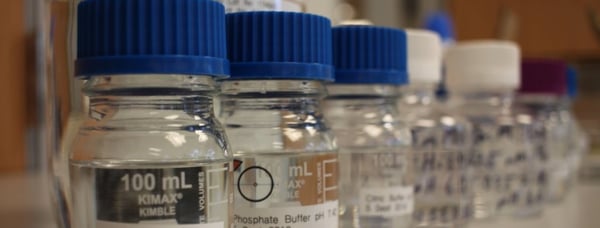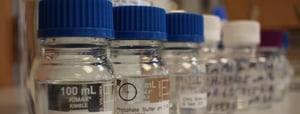By definition, a buffer is a solution that can resist pH change upon the addition of an acidic or basic components." These solutions are water solvent based and consist of a mixture of either a weak acid and the conjugate base, or a weak base and the conjugate acid. These solutions resist change in pH and are therefore able to maintain a relatively stable solution pH.

Buffers are the foundation of therapeutic formulations. In therapeutic formulations, buffer solutions transport and stabilize your active therapeutic ingredients. The buffer environment will impact both the individual proteins and the interaction between pairs. Buffer additives are often chosen specifically to ensure stability of protein solutions and to reduce viscosity without lowering the concentration. Excipients are almost always included in buffer solutions and other common additives include mono or disaccharides, sugar alcohols, and individual amino acids.
Buffer solutions act as the foundation of fully formulation proteins making it crucial that the buffer is properly and consistently formulated. Monitoring the buffer viscosity is an effective quality control process and helps to ensure consistency of the raw materials as well as the formulation process.
A detailed viscosity analysis can reveal the impact of the buffer components on both the individual protein behavior as well as the interaction between neighboring molecules. Establishing such a knowledge base can provide guidance for future formulation activities and eliminate the need for guess work.
The intrinsic viscosity protocol involves measurement of a concentration series in the dilute regime. The analysis is simplified in the dilute limit since viscosity can be expressed as a series expansion in concentration. The coefficients can then be used to quantify the individual protein contribution and the pair or protein-protein interactions (PPI). Download our application note "Intrinsic Viscosity of Protein Solutions – Impact of Buffer Additives" to learn more about the relevant equations and meaning of the extracted parameters.
Written by: Eden Reid, RheoSense Senior Marketing and Sales Operations



